Dimosthenis Karatzas
InfographicVQA
Apr 26, 2021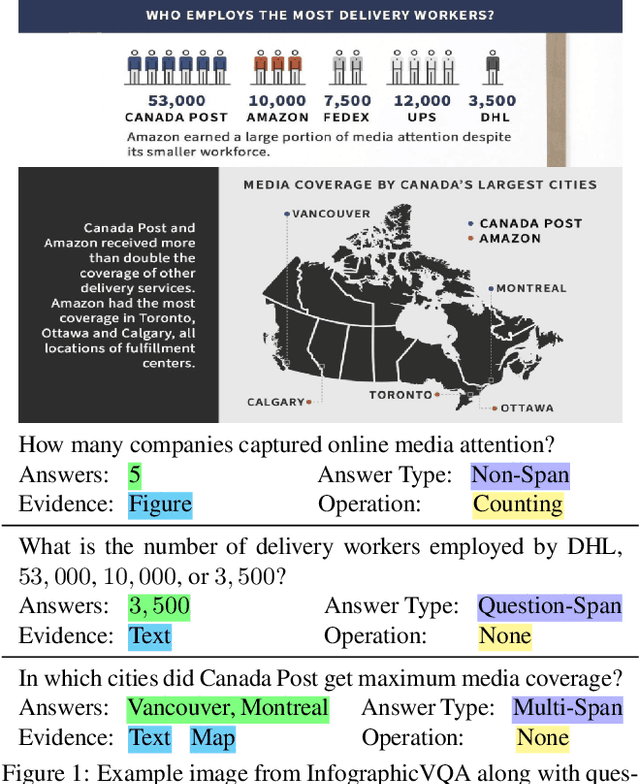


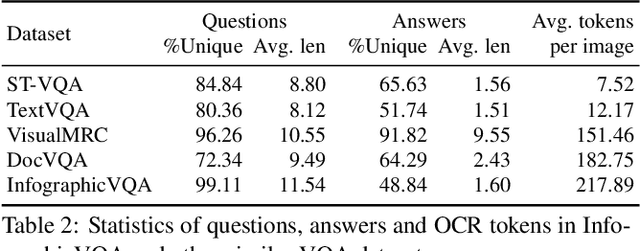
Abstract:Infographics are documents designed to effectively communicate information using a combination of textual, graphical and visual elements. In this work, we explore the automatic understanding of infographic images by using Visual Question Answering technique.To this end, we present InfographicVQA, a new dataset that comprises a diverse collection of infographics along with natural language questions and answers annotations. The collected questions require methods to jointly reason over the document layout, textual content, graphical elements, and data visualizations. We curate the dataset with emphasis on questions that require elementary reasoning and basic arithmetic skills. Finally, we evaluate two strong baselines based on state of the art multi-modal VQA models, and establish baseline performance for the new task. The dataset, code and leaderboard will be made available at http://docvqa.org
ICDAR2019 Competition on Scanned Receipt OCR and Information Extraction
Mar 18, 2021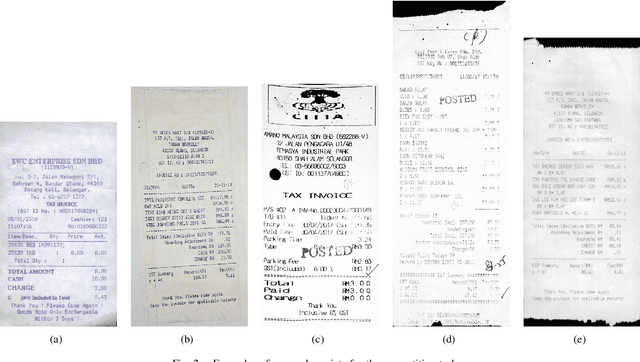
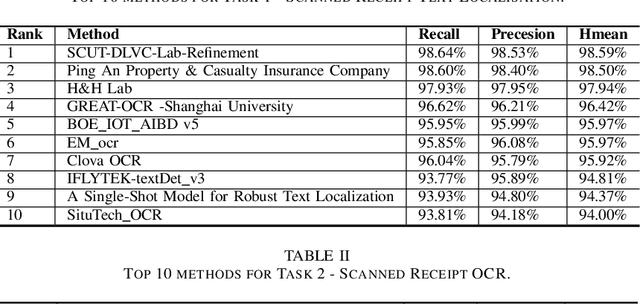
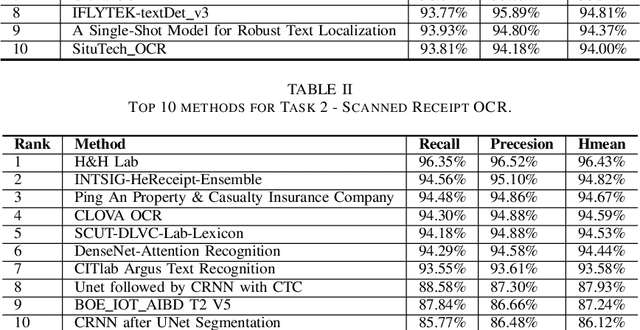

Abstract:Scanned receipts OCR and key information extraction (SROIE) represent the processeses of recognizing text from scanned receipts and extracting key texts from them and save the extracted tests to structured documents. SROIE plays critical roles for many document analysis applications and holds great commercial potentials, but very little research works and advances have been published in this area. In recognition of the technical challenges, importance and huge commercial potentials of SROIE, we organized the ICDAR 2019 competition on SROIE. In this competition, we set up three tasks, namely, Scanned Receipt Text Localisation (Task 1), Scanned Receipt OCR (Task 2) and Key Information Extraction from Scanned Receipts (Task 3). A new dataset with 1000 whole scanned receipt images and annotations is created for the competition. In this report we will presents the motivation, competition datasets, task definition, evaluation protocol, submission statistics, performance of submitted methods and results analysis.
StacMR: Scene-Text Aware Cross-Modal Retrieval
Dec 08, 2020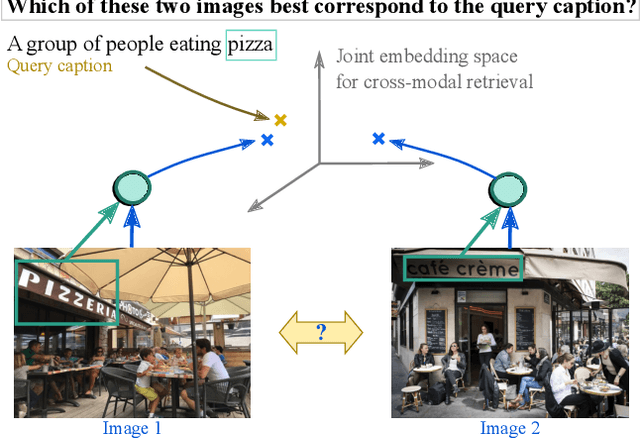

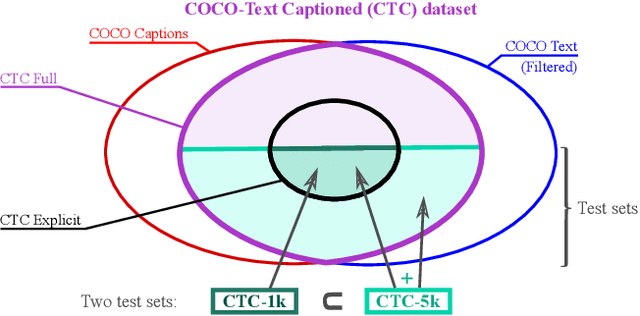
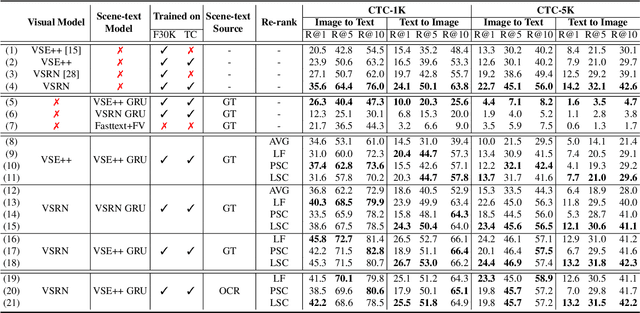
Abstract:Recent models for cross-modal retrieval have benefited from an increasingly rich understanding of visual scenes, afforded by scene graphs and object interactions to mention a few. This has resulted in an improved matching between the visual representation of an image and the textual representation of its caption. Yet, current visual representations overlook a key aspect: the text appearing in images, which may contain crucial information for retrieval. In this paper, we first propose a new dataset that allows exploration of cross-modal retrieval where images contain scene-text instances. Then, armed with this dataset, we describe several approaches which leverage scene text, including a better scene-text aware cross-modal retrieval method which uses specialized representations for text from the captions and text from the visual scene, and reconcile them in a common embedding space. Extensive experiments confirm that cross-modal retrieval approaches benefit from scene text and highlight interesting research questions worth exploring further. Dataset and code are available at http://europe.naverlabs.com/stacmr
Multi-Modal Reasoning Graph for Scene-Text Based Fine-Grained Image Classification and Retrieval
Sep 21, 2020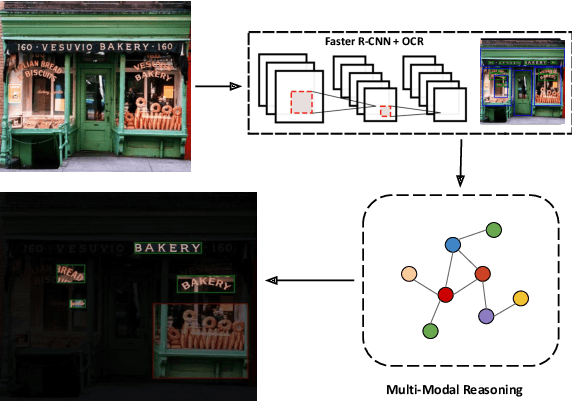
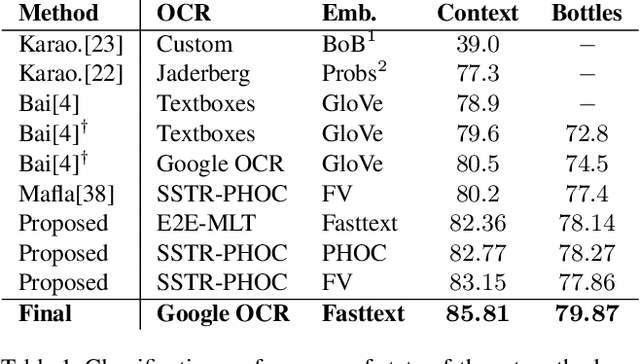


Abstract:Scene text instances found in natural images carry explicit semantic information that can provide important cues to solve a wide array of computer vision problems. In this paper, we focus on leveraging multi-modal content in the form of visual and textual cues to tackle the task of fine-grained image classification and retrieval. First, we obtain the text instances from images by employing a text reading system. Then, we combine textual features with salient image regions to exploit the complementary information carried by the two sources. Specifically, we employ a Graph Convolutional Network to perform multi-modal reasoning and obtain relationship-enhanced features by learning a common semantic space between salient objects and text found in an image. By obtaining an enhanced set of visual and textual features, the proposed model greatly outperforms the previous state-of-the-art in two different tasks, fine-grained classification and image retrieval in the Con-Text and Drink Bottle datasets.
Document Visual Question Answering Challenge 2020
Aug 20, 2020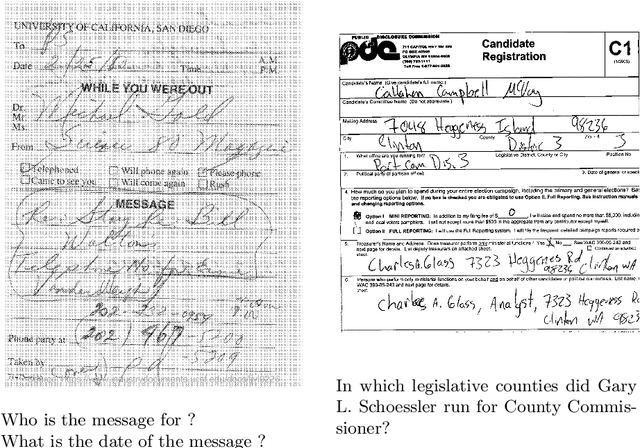
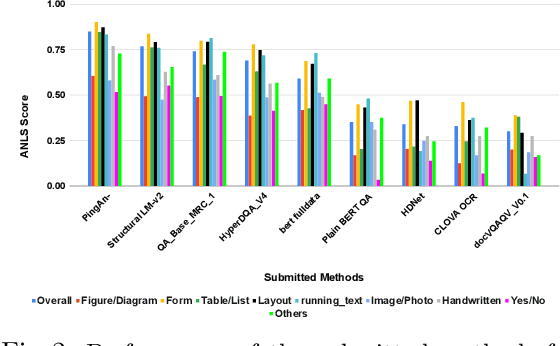
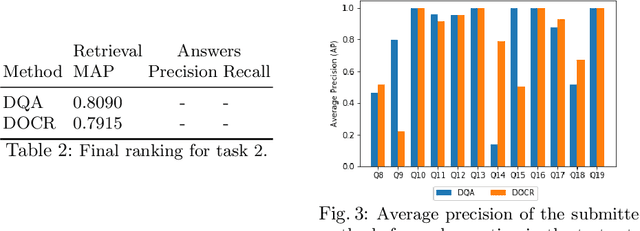
Abstract:This paper presents results of Document Visual Question Answering Challenge organized as part of "Text and Documents in the Deep Learning Era" workshop, in CVPR 2020. The challenge introduces a new problem - Visual Question Answering on document images. The challenge comprised two tasks. The first task concerns with asking questions on a single document image. On the other hand, the second task is set as a retrieval task where the question is posed over a collection of images. For the task 1 a new dataset is introduced comprising 50,000 questions-answer(s) pairs defined over 12,767 document images. For task 2 another dataset has been created comprising 20 questions over 14,362 document images which share the same document template.
Retrieval Guided Unsupervised Multi-domain Image-to-Image Translation
Aug 11, 2020
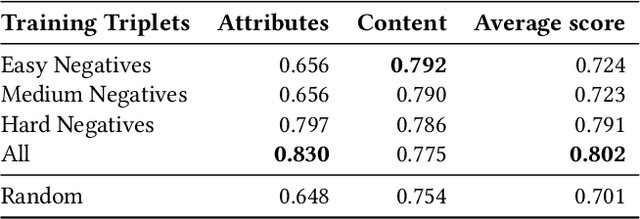
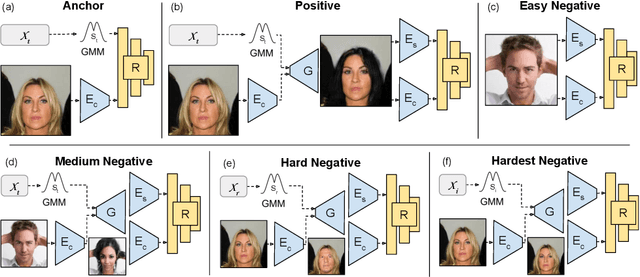

Abstract:Image to image translation aims to learn a mapping that transforms an image from one visual domain to another. Recent works assume that images descriptors can be disentangled into a domain-invariant content representation and a domain-specific style representation. Thus, translation models seek to preserve the content of source images while changing the style to a target visual domain. However, synthesizing new images is extremely challenging especially in multi-domain translations, as the network has to compose content and style to generate reliable and diverse images in multiple domains. In this paper we propose the use of an image retrieval system to assist the image-to-image translation task. First, we train an image-to-image translation model to map images to multiple domains. Then, we train an image retrieval model using real and generated images to find images similar to a query one in content but in a different domain. Finally, we exploit the image retrieval system to fine-tune the image-to-image translation model and generate higher quality images. Our experiments show the effectiveness of the proposed solution and highlight the contribution of the retrieval network, which can benefit from additional unlabeled data and help image-to-image translation models in the presence of scarce data.
Text Recognition -- Real World Data and Where to Find Them
Jul 17, 2020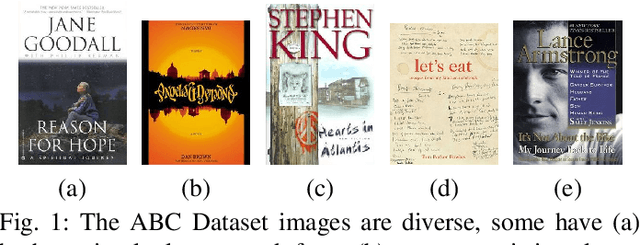

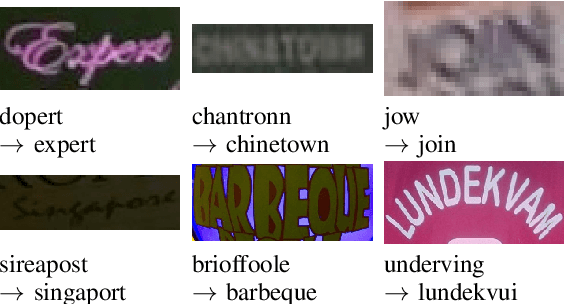
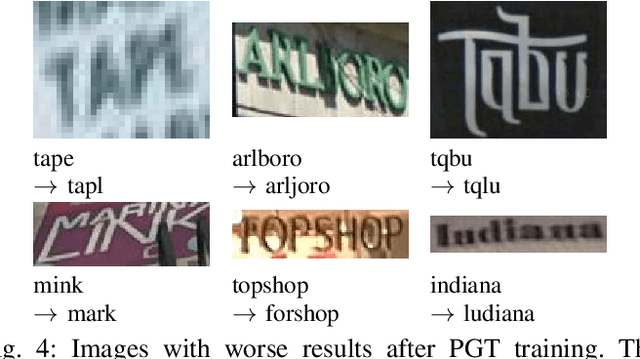
Abstract:We present a method for exploiting weakly annotated images to improve text extraction pipelines. The approach uses an arbitrary end-to-end text recognition system to obtain text region proposals and their, possibly erroneous, transcriptions. The proposed method includes matching of imprecise transcription to weak annotations and edit distance guided neighbourhood search. It produces nearly error-free, localised instances of scene text, which we treat as "pseudo ground truth" (PGT). We apply the method to two weakly-annotated datasets. Training with the extracted PGT consistently improves the accuracy of a state of the art recognition model, by 3.7~\% on average, across different benchmark datasets (image domains) and 24.5~\% on one of the weakly annotated datasets.
Location Sensitive Image Retrieval and Tagging
Jul 07, 2020
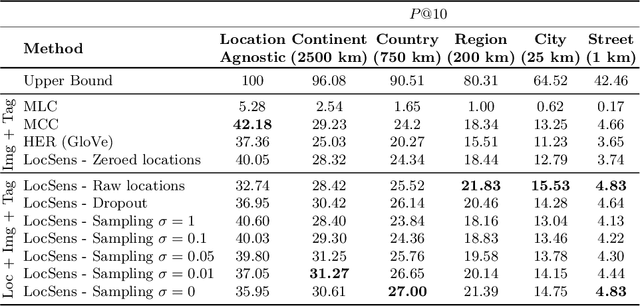
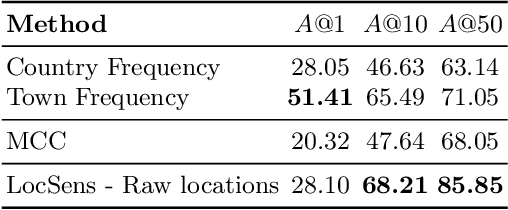

Abstract:People from different parts of the globe describe objects and concepts in distinct manners. Visual appearance can thus vary across different geographic locations, which makes location a relevant contextual information when analysing visual data. In this work, we address the task of image retrieval related to a given tag conditioned on a certain location on Earth. We present LocSens, a model that learns to rank triplets of images, tags and coordinates by plausibility, and two training strategies to balance the location influence in the final ranking. LocSens learns to fuse textual and location information of multimodal queries to retrieve related images at different levels of location granularity, and successfully utilizes location information to improve image tagging.
DocVQA: A Dataset for VQA on Document Images
Jul 01, 2020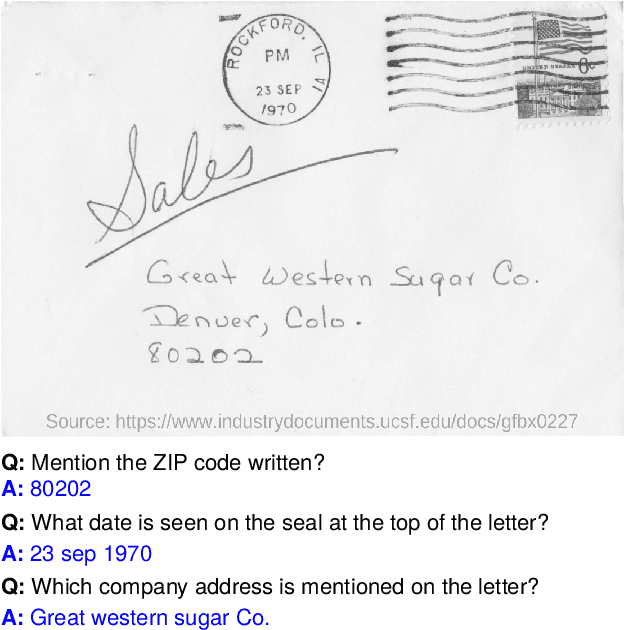
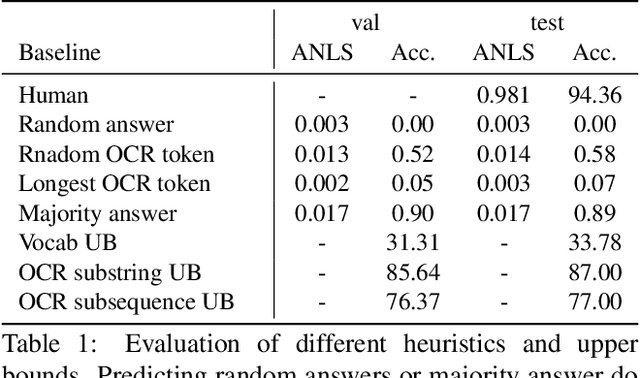

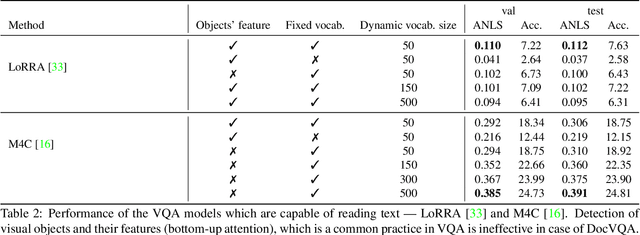
Abstract:We present a new dataset for Visual Question Answering on document images called DocVQA. The dataset consistsof 50,000 questions defined on 12,000+ document images. We provide detailed analysis of the dataset in comparison with similar datasets for VQA and reading comprehension. We report several baseline results by adopting existing VQA and reading comprehension models. Although the existing models perform reasonably well on certain types of questions, there is large performance gap compared to human performance (94.36% accuracy). The models need to improve specifically on questions where understanding structure of the document is crucial.
Multimodal grid features and cell pointers for Scene Text Visual Question Answering
Jun 25, 2020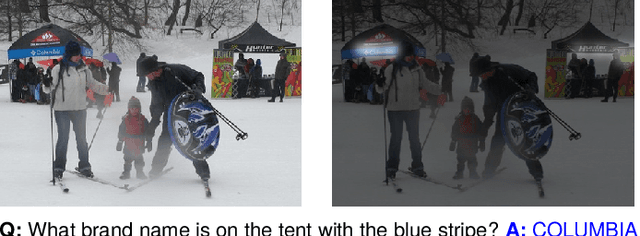
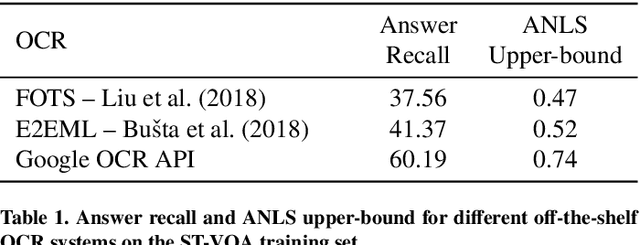
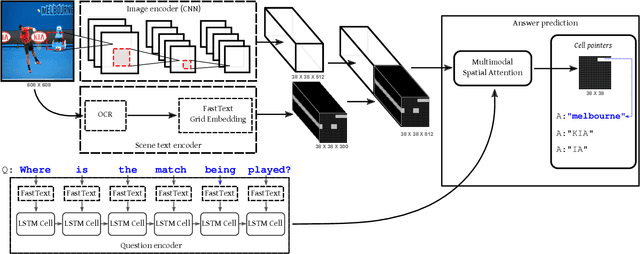

Abstract:This paper presents a new model for the task of scene text visual question answering, in which questions about a given image can only be answered by reading and understanding scene text that is present in it. The proposed model is based on an attention mechanism that attends to multi-modal features conditioned to the question, allowing it to reason jointly about the textual and visual modalities in the scene. The output weights of this attention module over the grid of multi-modal spatial features are interpreted as the probability that a certain spatial location of the image contains the answer text the to the given question. Our experiments demonstrate competitive performance in two standard datasets. Furthermore, this paper provides a novel analysis of the ST-VQA dataset based on a human performance study.
 Add to Chrome
Add to Chrome Add to Firefox
Add to Firefox Add to Edge
Add to Edge